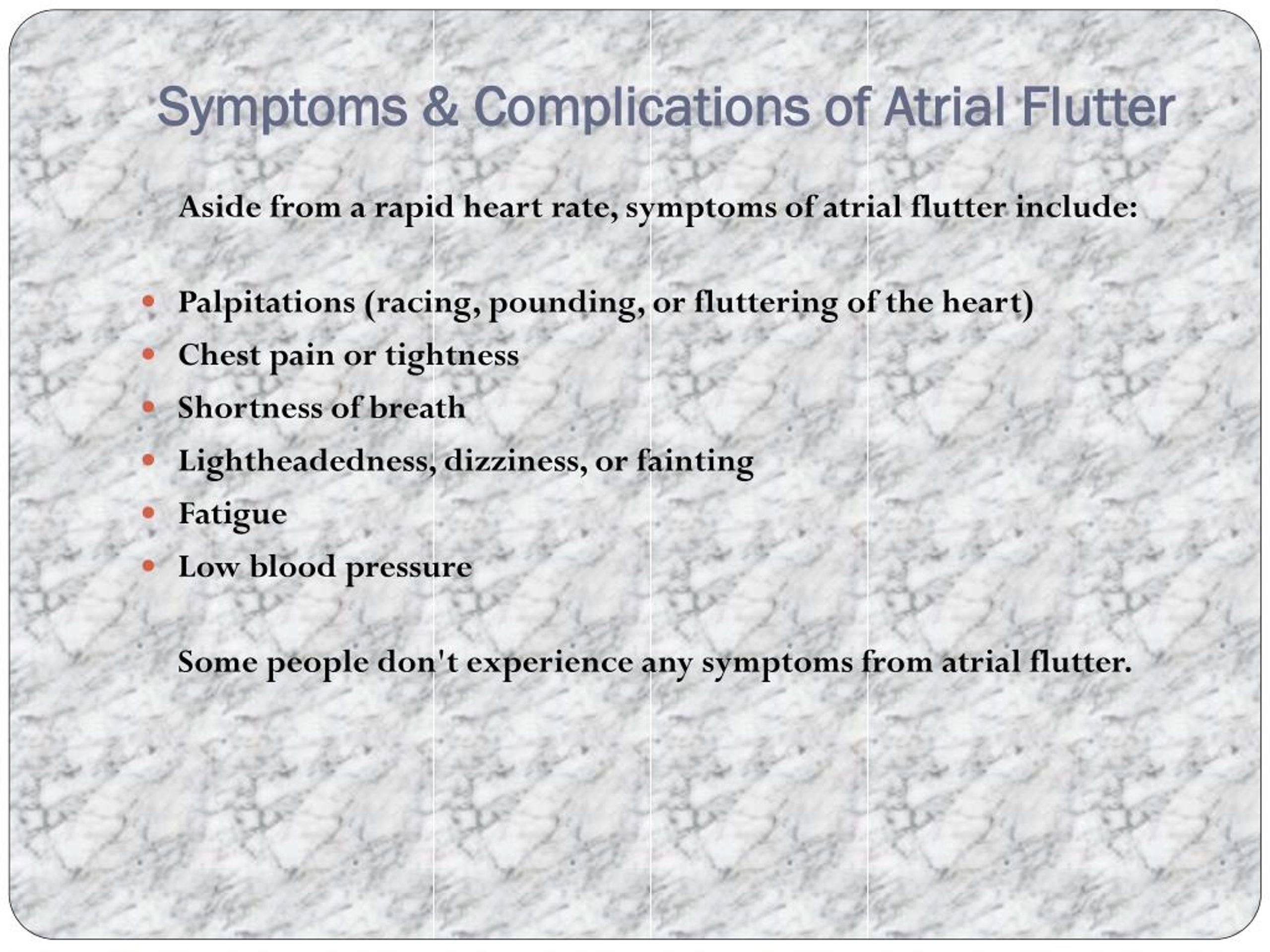
Amiodarone 150mg over 10min (preferably through central venous access) OR diltiazem 2.5mg/min until HRIndications: ischemic chest pain, SBP 60.Does not meet criteria for typical atrial flutter.Positive flutter waves in inferior leads.Inverted flutter waves in inferior leads.Re-entry circuit of right atrium (IVC and tricuspid valve).Amal Mattu recommends flipping ECG 180 to easily see inverted P waves or speed machine up to 50 mm/s to stretch out ECG.A-fib is completely irregular with no relationship between intervals.Look for: R-R interval that is multiple of P-P interval and mathematical relationship between R-R intervals.Difficult to distinguish from atrial fibrillation.Suggests AV nodal blocking agents or AV node disease.Suspect atrial flutter whenever ventricular rate is 150.Suggests pre-excitation, sympathetic excess, parasympathetic withdrawal, Class 1C anti-arrhythmic use.Hallmark is discordance in flutter wave direction between inferior leads and V1.Flutter waves (sawtooth pattern) in inferior leads.Usually regular unless variable AV conduction present.Cardiac Echo - if signs of new/worsening heart failure.


Second Degree AV Block Type I (Wenckeback).Atrial fibrillation/ atrial flutter with variable AV conduction AND accessory pathway (e.g.Atrial fibrillation/ atrial flutter with variable AV conduction AND bundle branch block^.Accelerated idioventricular rhythm (consider if less than or ~120 bpm).Sinus tachycardia with bundle branch block^.Atrial flutter with bundle branch block^.Atrial flutter with variable conductionĪssume any wide-complex tachycardia is ventricular tachycardia until proven otherwise (it is safer to incorrectly assume a ventricular dysrhythmia than supraventricular tachycardia with abberancy).Sinus tachycardia with frequent PACs, PJCs, PVCs.Paroxysmal supraventricular tachycardia (PSVT).Idiopathic fascicular left ventricular tachycardia.Atrial tachycardia (uni-focal or multi-focal).Defined by atrial rate of 250-350, classically 300Ĭan be difficult to distinguish from atrial fibrillation Narrow-complex tachycardia.5.4.1 Anticoagulation Prior to Cardioversion.Before you see your doctor, write down any questions or concerns you may have. If a cause is found, such as high blood pressure, you will be treated for that condition as well. It’s important to talk with your doctor about your arrhythmia and treatment options if you’ve been diagnosed with atrial flutter.Įven if you have no symptoms while in atrial flutter, you may still be prescribed medicine because of the risk of stroke. If this procedure is a treatment option for you, the electrophysiologist will talk to you more about it. One of these treatments is an invasive procedure called anĪblation. These doctors may have other suggestions or treatment options for people whose atrial flutter is hard to control. An electrophysiologist is a cardiologist with extra training in treating people with heart rhythm problems. In some cases, you will be referred to see another cardiac specialist called anĮlectrophysiologist. The SA node is the natural pacemaker within the heart. The shock disrupts the fast atrial impulses so the SA node can take over, making your heart beat at a normal rate. This procedure is done while you’re asleep paddles are applied to your chest and an electrical shock is delivered to your heart through your chest wall. If the atrial flutter can’t be managed well with medicine, your cardiologist may recommend that you have anĮlectrical cardioversion done. If you are prescribed warfarin, you will be asked to have a blood test (INR) done regularly to make sure the dose is right for you.Īspirin (ASA) also works as a blood thinner and is sometimes used for people who are at a low risk of having a stroke. Please speak with your doctor or cardiologist if you’d you like to know more.

Other blood thinners that work as well as warfarin, have a lower risk of bleeding, and don’t need regular blood tests are also available. The most common one is warfarin (Coumadin ®). To prevent a blood clot from forming in your heart, you may be started on a blood thinner medicine. Your family doctor or your heart doctor (cardiologist) will talk to you more about these medicines. Most often, treatment includes medicine that either keeps your heart in a normal rhythm or keeps your pulse at a normal rate (under 100 bpm) while the atria are in atrial flutter. Your treatment choices depend mainly on:


 0 kommentar(er)
0 kommentar(er)
